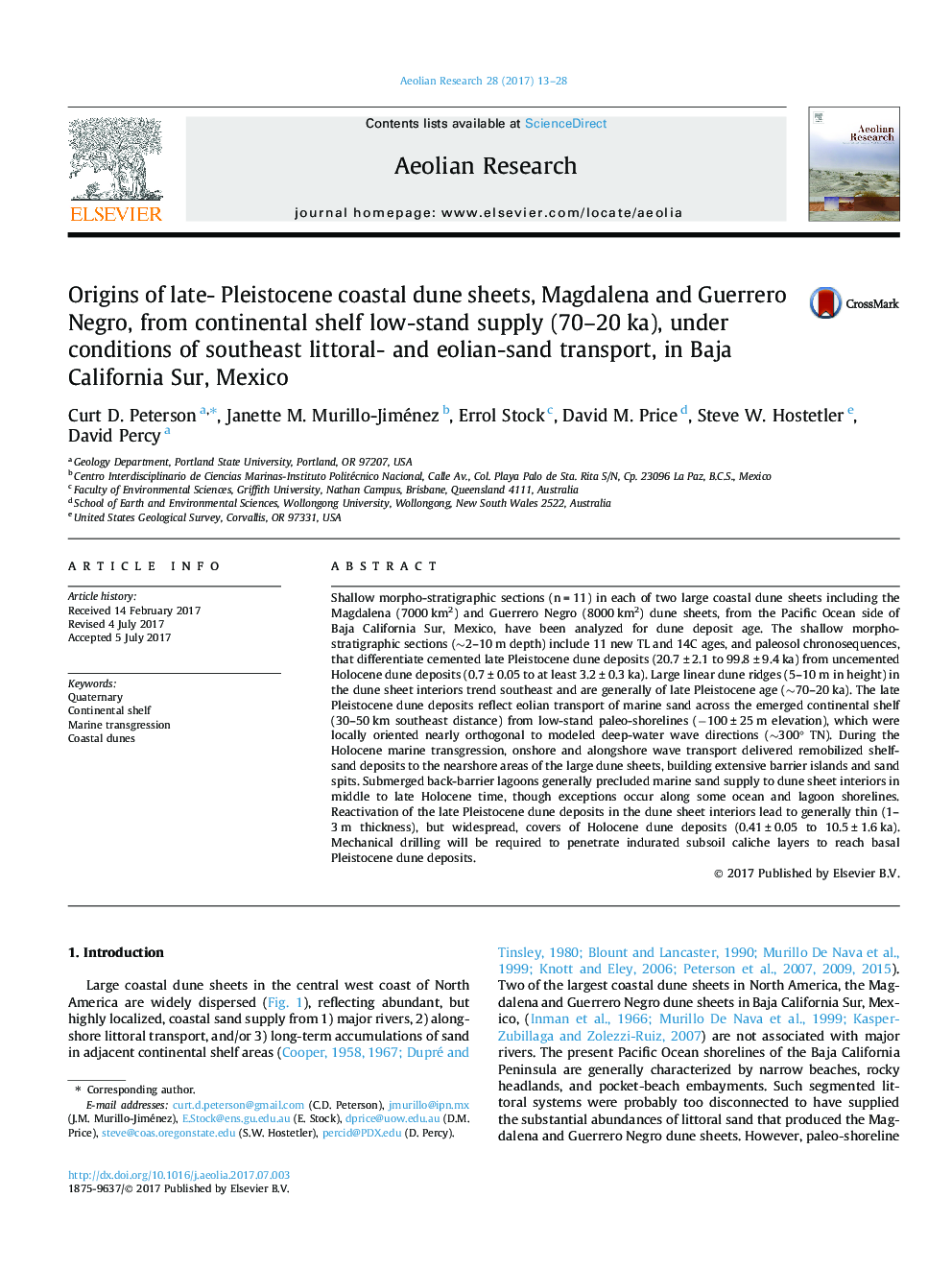| کد مقاله | کد نشریه | سال انتشار | مقاله انگلیسی | نسخه تمام متن |
|---|---|---|---|---|
| 5779064 | 1634100 | 2017 | 16 صفحه PDF | دانلود رایگان |
عنوان انگلیسی مقاله ISI
Origins of late- Pleistocene coastal dune sheets, Magdalena and Guerrero Negro, from continental shelf low-stand supply (70-20Â ka), under conditions of southeast littoral- and eolian-sand transport, in Baja California Sur, Mexico
ترجمه فارسی عنوان
ریشه های ورق های دونری ساحلی اواخر - پلیستوکن، ماگدالنا و گوئررو نگار، از کمینه پایه قاره آفریقا (70-20 درجه سانتیگراد)، در شرایط حمل و نقل در ساحل جنوب غربی و شمال شرقی شن و ماسه در باخا کالیفر سو، مکزیک
دانلود مقاله + سفارش ترجمه
دانلود مقاله ISI انگلیسی
رایگان برای ایرانیان
کلمات کلیدی
کواترنر، فلات قاره، جنایات دریایی، تپه های ساحلی
موضوعات مرتبط
مهندسی و علوم پایه
علوم زمین و سیارات
علم هواشناسی
چکیده انگلیسی
Shallow morpho-stratigraphic sections (n = 11) in each of two large coastal dune sheets including the Magdalena (7000 km2) and Guerrero Negro (8000 km2) dune sheets, from the Pacific Ocean side of Baja California Sur, Mexico, have been analyzed for dune deposit age. The shallow morpho-stratigraphic sections (â¼2-10 m depth) include 11 new TL and 14C ages, and paleosol chronosequences, that differentiate cemented late Pleistocene dune deposits (20.7 ± 2.1 to 99.8 ± 9.4 ka) from uncemented Holocene dune deposits (0.7 ± 0.05 to at least 3.2 ± 0.3 ka). Large linear dune ridges (5-10 m in height) in the dune sheet interiors trend southeast and are generally of late Pleistocene age (â¼70-20 ka). The late Pleistocene dune deposits reflect eolian transport of marine sand across the emerged continental shelf (30-50 km southeast distance) from low-stand paleo-shorelines (â100 ± 25 m elevation), which were locally oriented nearly orthogonal to modeled deep-water wave directions (â¼300° TN). During the Holocene marine transgression, onshore and alongshore wave transport delivered remobilized shelf-sand deposits to the nearshore areas of the large dune sheets, building extensive barrier islands and sand spits. Submerged back-barrier lagoons generally precluded marine sand supply to dune sheet interiors in middle to late Holocene time, though exceptions occur along some ocean and lagoon shorelines. Reactivation of the late Pleistocene dune deposits in the dune sheet interiors lead to generally thin (1-3 m thickness), but widespread, covers of Holocene dune deposits (0.41 ± 0.05 to 10.5 ± 1.6 ka). Mechanical drilling will be required to penetrate indurated subsoil caliche layers to reach basal Pleistocene dune deposits.
ناشر
Database: Elsevier - ScienceDirect (ساینس دایرکت)
Journal: Aeolian Research - Volume 28, October 2017, Pages 13-28
Journal: Aeolian Research - Volume 28, October 2017, Pages 13-28
نویسندگان
Curt D. Peterson, Janette M. Murillo-Jiménez, Errol Stock, David M. Price, Steve W. Hostetler, David Percy,
